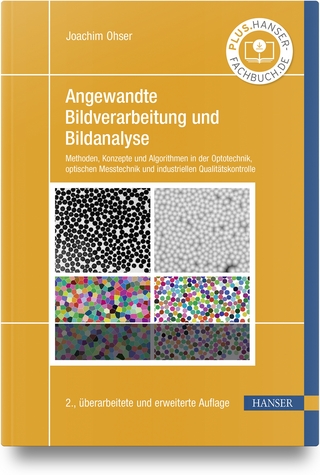
Boosting-Based Face Detection and Adaptation
Springer International Publishing (Verlag)
978-3-031-00681-4 (ISBN)
Cha Zhang is a Researcher in the Communication and Collaboration Systems Group at Microsoft Research (Redmond, WA). He received the B.S. and M.S. degrees from Tsinghua University, Beijing, China in 1998 and 2000, respectively, both in Electronic Engineering, and the Ph.D. degree in Electrical and Computer Engineering from Carnegie Mellon University, in 2004. His current research focuses on applying various machine learning and computer graphics/computer vision techniques to multimedia applications, in particular, multimedia teleconferencing. During his graduate studies at CMU, he worked on various multimedia related projects including sampling and compression of image-based rendering data, 3D model database retrieval and active learning for database annotation, peer-to-peer networking, etc. Dr. Zhang has published more than 40 technical papers and holds 10+ U.S. patents. He won the best paper award at ICME 2007, the top 10% award at MMSP 2009, and the best student paper award at ICME 2010. He co-authored a book titled Light Field Sampling, published by Morgan and Claypool in 2006. Dr. Zhang is a Senior Member of IEEE. He was the Publicity Chair for International Packet Video Workshop in 2002, the Program Co-Chair for the first Immersive Telecommunication Conference (IMMERSCOM) in 2007, the Steering Committee Co-Chair and Publicity Chair for IMMERSCOM 2009, the Program Co-Chair for the ACM Workshop on Media Data Integration (in conjunction with ACM Multimedia 2009), and the Poster&Demo Chair for ICME 2011. He served as TPC members for many conferences including ACM Multimedia, CVPR, ICCV, ECCV, MMSP, ICME, ICPR, ICWL, etc. He served as an Associate Editor for Journal of Distance Education Technologies, IPSJ Transactions on Computer Vision and Applications, and ICST Transactions on Immersive Telecommunications. He was a guest editor for Advances in Multimedia, Special Issue on Multimedia Immersive Technologies and Networking. Long Quan is a Professor of the Department of Computer Science and Engineering at the Hong Kong University of Science and Technology. He received his Ph.D. in Computer Science from INPL, France, in 1989. Before moving back to Hong Kong in 2001, he has been a French CNRS senior research scientist at INRIA in Grenoble. His research interests are focused on 3D reconstruction, structure from motion, vision geometry, and image-based modeling. He has served as an Associate Editor of PAMI (IEEE Transactions on Pattern Analysis and Machine Intelligence) and as a Regional Editor of IVC (Image and Vision Computing Journal). He is currently on the editorial board of IJCV (the International Journal of Computer Vision), ELCVIA (the Electronic Letters on Computer Vision and Image Analysis), MVA (Machine Vision and Applications) and Foundations and Trends in Computer Graphics and Vision. He has served as area chair for ICCV (International Conference on Computer Vision), ECCV (European Conference on Computer Vision), and CVPR (IEEE Computer Vision and Pattern Recognition) and ICPR (IAPR International Conference on Pattern Recognition). He was a Program Chair of ICPR 2006 Computer Vision and Image Analysis, and is a General Chair of ICCV 2011 in Barcelona.
A Brief Survey of the Face Detection Literature.- Cascade-based Real-Time Face Detection.- Multiple Instance Learning for Face Detection.- Detector Adaptation.- Other Applications.- Conclusions and Future Work.
| Erscheinungsdatum | 06.06.2022 |
|---|---|
| Reihe/Serie | Synthesis Lectures on Computer Vision |
| Zusatzinfo | XII, 132 p. |
| Verlagsort | Cham |
| Sprache | englisch |
| Maße | 191 x 235 mm |
| Gewicht | 286 g |
| Themenwelt | Informatik ► Grafik / Design ► Digitale Bildverarbeitung |
| Informatik ► Theorie / Studium ► Künstliche Intelligenz / Robotik | |
| ISBN-10 | 3-031-00681-X / 303100681X |
| ISBN-13 | 978-3-031-00681-4 / 9783031006814 |
| Zustand | Neuware |
| Haben Sie eine Frage zum Produkt? |
aus dem Bereich


